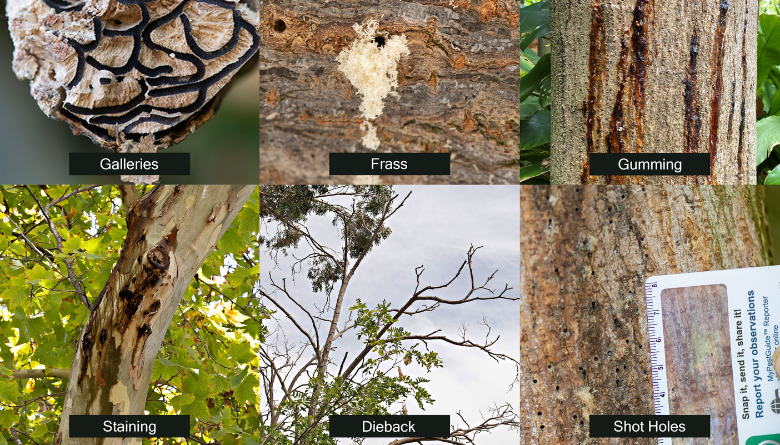.png)
Help us protect our forests and horticulture from polyphagous shot-hole borer (PSHB).
A tiny beetle known as the polyphagous shot-hole borer (PSHB) has been causing big problems in urban forests throughout the Perth metro area.
About the size of a sesame seed, the beetle bores tunnels in trees, where they cultivate a fungus as a food source. The growth of this fungus disrupts the flow of water and nutrients around the tree and can lead to branches and even whole trees dying.
While the government has been working hard to limit the spread of pest beyond the Perth metropolitan area, there is a possibility PSHB could eventually spread across the state, including to the South West. This spread could be catastrophic for our region and impact everything from our local horticulture to our beautiful forests.
How you can help stop the spread
The beetle doesn’t move far on its own – human assisted spread is the main source of spread for this beetle. One of the best ways to stop the spread is to not bring wood and large live plants from Perth, which is a quarantine area, to other parts of the state.
If you are travelling to the South West, or you’re a local who is welcoming guests such as family members, friends or short stay accommodation guests, please remind them to not bring wood, including firewood into the South West. The beetles disperse when infested wood is burnt, increasing the risk of spread further.
How to spot PSHB
DPIRD is encouraging people to keep an eye out for signs and symptoms of a possible PSHB infestation in your plants. Check your plants for small, round shot holes (~1mm in size), galleries, frass, dieback, gumming, lesions or sugar volcanos, as seen in the image below. If you do spot anything, please report it to the MyPestGuide – Report App.

For more information, please visit DPIRD’s website: www.dpird.wa.gov.au/pshb

